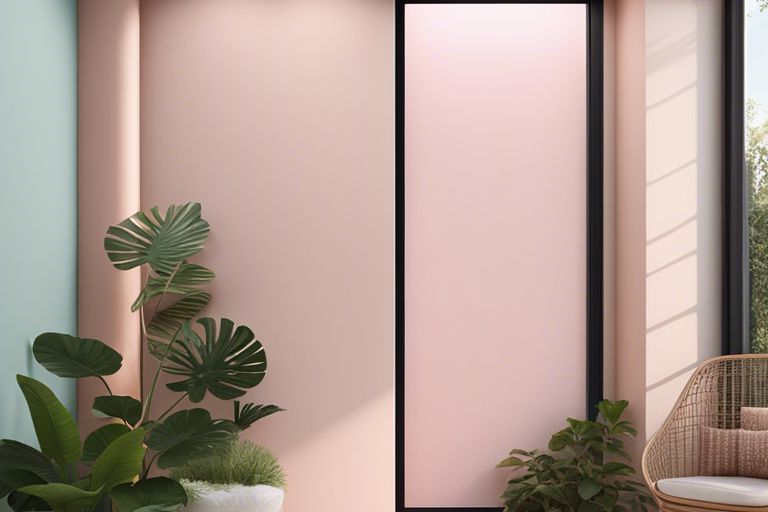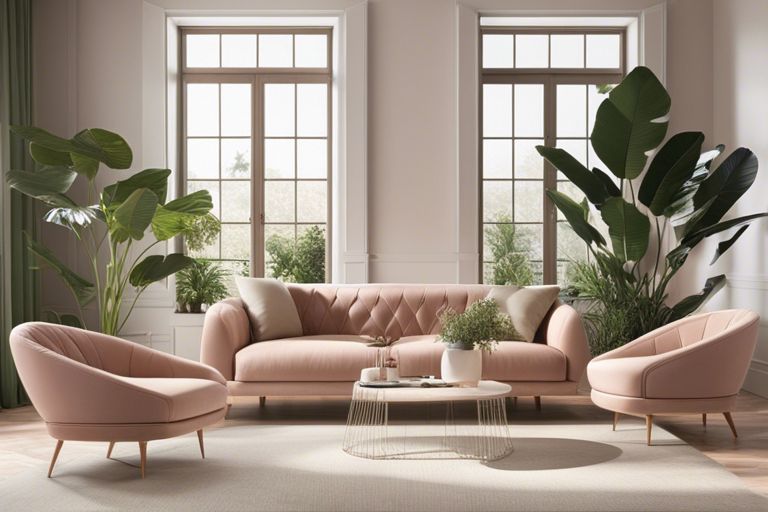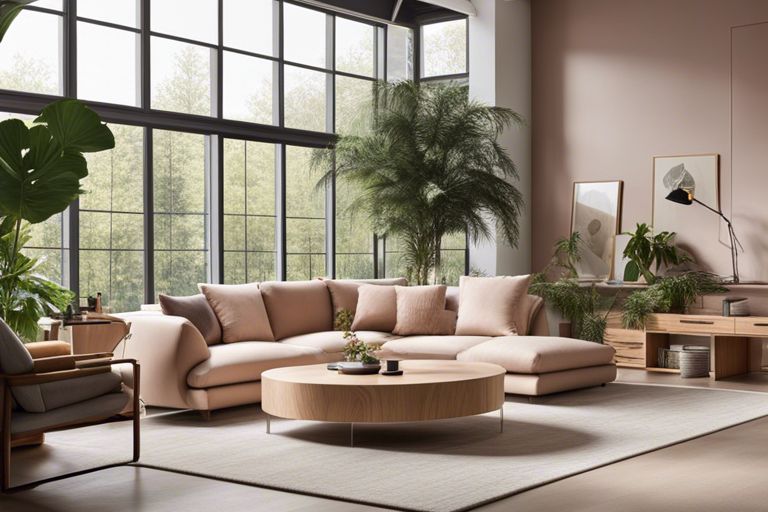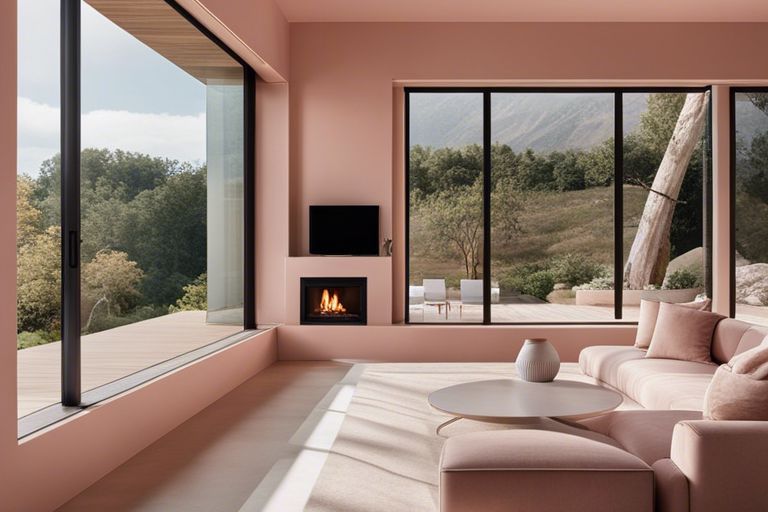With biophilic design principles integrated into your living or work spaces, you can experience a significant boost in your mental health and reduction in stress levels. By connecting with nature through elements like natural light, plants, and natural materials, you can create environments that promote relaxation and well-being. This blog post will explore the ways in which biophilic design can positively impact your mental health and help alleviate stress in your daily life.
Key Takeaways:
- Biophilic design can reduce stress: Incorporating natural elements into indoor spaces can help lower stress levels and promote a sense of calmness.
- Connection to nature boosts mental health: Being surrounded by nature or elements that mimic nature can enhance overall well-being and mental health.
- Biophilic design can improve productivity: By integrating natural elements into workspaces, individuals may experience increased focus, creativity, and productivity.

The Science Behind Biophilic Design
The Human Connection to Nature
For centuries, humans have had a deep-rooted connection to nature. This innate bond with the natural world is known as biophilia. Your evolutionary history has ingrained a preference for environments with abundant natural elements. When you are surrounded by nature, your stress levels decrease, and your overall well-being improves.
The Impact of Urbanization on Mental Health
One of the consequences of rapid urbanization is the disconnect from nature. The concrete jungles we live in can lead to increased stress, anxiety, and depression. Your daily interactions with artificial environments can take a toll on your mental health, contributing to a range of issues. Making an effort to incorporate biophilic design elements into your surroundings can significantly benefit your mental well-being.
Connection to nature has proven to enhance your mood and cognitive function. Studies have shown that access to natural light, greenery, and natural textures can reduce stress and improve your overall mental health. By embracing biophilic design principles in your living or working spaces, you can create environments that promote relaxation, concentration, and a sense of well-being.
The Effects of Biophilic Design on Mental Health
Reduced Stress Levels
Assuming you are constantly feeling stressed and overwhelmed, incorporating biophilic elements into your living or working environment can significantly reduce your stress levels. Biophilic design reconnects you with nature, creating a calming atmosphere that allows you to relax and unwind. Natural light, indoor plants, and nature views help lower cortisol levels, the stress hormone, leading to a sense of tranquility and peace.
Improved Mood and Cognitive Function
With biophilic design, your mood receives a positive boost, and your cognitive function improves. The presence of natural elements enhances your creativity, focus, and productivity. Studies have shown that individuals exposed to biophilic environments experience improved cognitive performance, problem-solving skills, and overall well-being.
Plus, being surrounded by greenery and natural elements can uplift your spirits, increase feelings of happiness, and improve your emotional state. Biophilic design fosters a sense of connection with the environment, promoting a sense of peace and contentment within you.
Enhanced Emotional Well-being
Mood is significantly influenced by your surroundings, and biophilic design plays a crucial role in enhancing your emotional well-being. The presence of elements such as water features, natural materials, and outdoor views can evoke feelings of serenity and joy. These positive emotions can contribute to a reduction in anxiety, depression, and feelings of isolation.
Mental health is intricately linked to your environment, and by embracing biophilic design principles, you create a harmonious space that supports your emotional and psychological well-being. Your mental health flourishes in a biophilic environment, allowing you to feel more centered, balanced, and at peace with yourself.
The Role of Natural Light in Biophilic Design
The Importance of Daylight Exposure
With your hectic daily schedule and time spent indoors, you may not realize the impact of natural light exposure on your mental well-being. Daylight exposure is crucial for regulating your circadian rhythms, influencing your sleep patterns, mood, and overall health. Lack of natural light can disrupt your internal body clock, leading to difficulties in falling asleep and waking up, as well as causing mood disturbances and even depression.
The Benefits of Natural Light on Circadian Rhythms
Role
By incorporating natural light into your living or workspace, you can help stabilize your circadian rhythms. Natural light exposure during the day signals to your body that it is time to be awake and alert, whereas reduced light in the evening prompts your body to start producing melatonin, a hormone that helps you relax and prepares you for sleep.
Another
Design Strategies for Maximizing Natural Light
Any
Architects and designers utilize various strategies to maximize natural light in buildings, such as incorporating large windows, skylights, light wells, and reflective surfaces to bounce light deeper into the space. This design approach not only increases the amount of natural light but also helps reduce reliance on artificial lighting during the day, saving energy and creating a more dynamic and visually appealing environment for you to thrive in.
Incorporating Nature into Interior Spaces
Despite the advances in technology and modern design trends, there is a growing recognition of the importance of incorporating nature into interior spaces to improve mental health and reduce stress.
The Use of Plants and Green Walls
An effective way to bring nature indoors is through the strategic placement of plants and green walls. Plants not only add a touch of greenery and natural beauty to your space but also have proven benefits for your mental well-being. Research shows that indoor plants can help reduce stress, increase productivity, and even improve air quality by reducing toxins in the air. Green walls, made up of living plants, can also provide a calming effect and enhance the overall ambiance of a room.
Natural Materials and Textures
Nature has an inherent calming effect on the mind, and incorporating natural materials and textures into your interior design can help create a sense of tranquility and connection to the outdoors. By incorporating materials such as wood, stone, and natural fabrics into your space, you can create a harmonious and soothing environment that promotes relaxation and reduces anxiety.
Natural materials have a grounding and organic quality that can evoke feelings of warmth and comfort. Wooden furniture, stone countertops, and soft wool rugs can add a tactile element to your surroundings, making you feel more connected to the natural world.
Water Features and Aquatic Elements
The sound of flowing water and the sight of aquatic elements can have a profound impact on your mental state and overall well-being. The incorporation of water features such as fountains, ponds, or even a small indoor waterfall can create a sense of serenity and relaxation in your space.
With their calming and tranquil properties, water features can help reduce stress levels and promote a sense of peace and harmony. The gentle sound of running water can have a meditative effect, helping you to unwind and destress after a long day.
Biophilic Design in Different Settings
Offices and Workspaces
One of the key benefits of incorporating biophilic design elements in offices and workspaces is the positive impact it can have on your mental health and well-being. Natural elements such as plants, natural light, and green views can help reduce stress, improve concentration, and increase productivity. Studies have shown that employees are happier and more productive in work environments with biophilic elements.
Healthcare Facilities and Hospitals
With biophilic design in healthcare facilities and hospitals, patients can experience reduced anxiety, pain, and stress levels during their stay. Natural elements like views of nature, indoor gardens, and natural materials can help create a calming and healing environment. Research has indicated that integrating biophilic design in healthcare settings can lead to faster recovery times and improved overall patient satisfaction.
Settings
Educational Institutions and Schools
To create a more conducive learning environment, incorporating biophilic design in educational institutions and schools can have a significant impact on students’ academic performance and well-being. Exposure to natural light, green spaces, and natural textures can enhance creativity, focus, and cognitive function. Schools that implement biophilic design principles often see improved student behavior and engagement in the classroom.
Educational
Overcoming Challenges and Limitations
Not every project is without its challenges when it comes to implementing biophilic design. Despite the numerous benefits it offers, there are some limitations that you may encounter along the way. One source of valuable information on this topic can be found in the article on Healthy Dwelling: Design of Biophilic Interior Environments ….
Budget Constraints and Cost-Effective Solutions
Limitations such as budget constraints can deter individuals and designers from incorporating biophilic elements. However, there are cost-effective solutions available. For instance, opting for high-quality artificial plants or utilizing natural light through strategically placed windows can be more affordable alternatives to costly living plant installations. It is important to prioritize elements that will have the most significant impact on your mental well-being within your financial means.
Space Limitations and Creative Workarounds
Limitations related to space can also pose challenges in integrating biophilic design. However, there are creative workarounds you can explore. Consider vertical gardens, hanging planters, or even incorporating nature-inspired artwork to bring the outdoors inside when space is limited. Being resourceful and thinking outside the box can help you achieve a biophilic environment even in a confined space.
Creative solutions can transform even the smallest of spaces into tranquil retreats that promote relaxation and mental well-being. By embracing innovative ideas and unconventional methods, you can create a biophilic design that resonates with your personal style and enhances your living or working environment.
Balancing Aesthetics and Functionality
The key to successfully implementing biophilic design lies in finding the balance between aesthetics and functionality. While incorporating natural elements is crucial for creating a biophilic space, it is equally important to ensure that these elements serve a practical purpose and enhance the overall functionality of the space. Striking this balance will not only improve the visual appeal of your environment but also contribute to its usability and comfort.
It is important to carefully plan the integration of biophilic elements to ensure they complement the existing design and serve a meaningful purpose. By harmonizing aesthetics with functionality, you can create a space that not only looks beautiful but also fosters well-being and reduces stress.
Final Words
Ultimately, incorporating biophilic design elements into your living or working spaces can significantly improve your mental health and reduce stress. By connecting with nature through the use of natural light, greenery, and natural materials, you can create a calming and rejuvenating environment that promotes well-being. Recall, incorporating biophilic design doesn’t have to be complicated or costly. Simple additions like houseplants, natural textures, and views of nature can go a long way in enhancing your mental health.
FAQ
Q: What is biophilic design?
A: Biophilic design is an innovative approach that integrates nature and natural elements into the built environment to improve overall well-being and connection to nature.
Q: How can biophilic design improve mental health?
A: Biophilic design has been shown to reduce stress, anxiety, and depression levels, increase productivity, creativity, and focus, as well as promote overall feelings of well-being and happiness.
Q: What are some examples of biophilic design elements?
A: Examples of biophilic design elements include incorporating natural light, views of nature, indoor plants, natural materials like wood and stone, water features, and green walls into spaces to create a connection with the natural environment.


